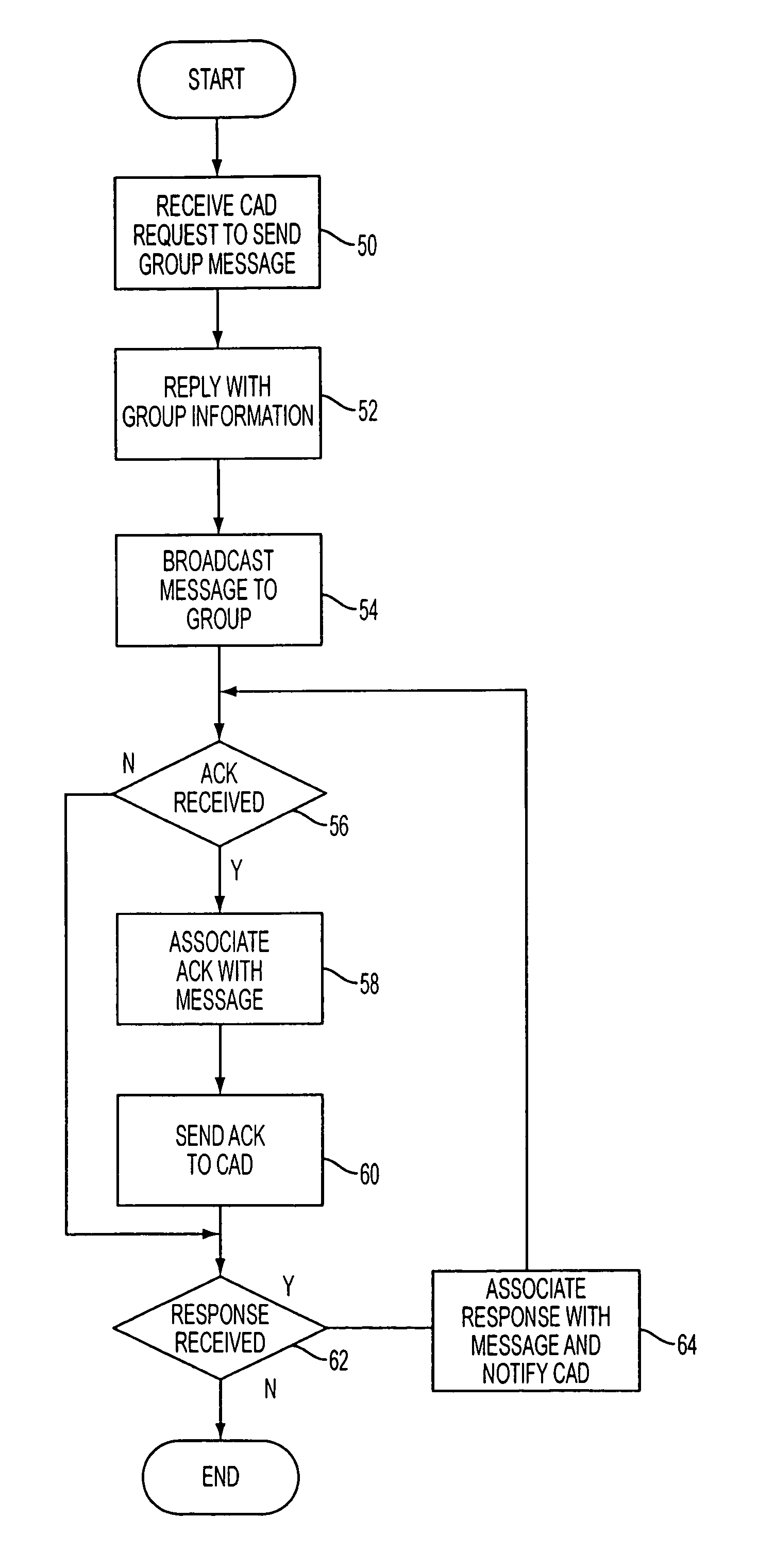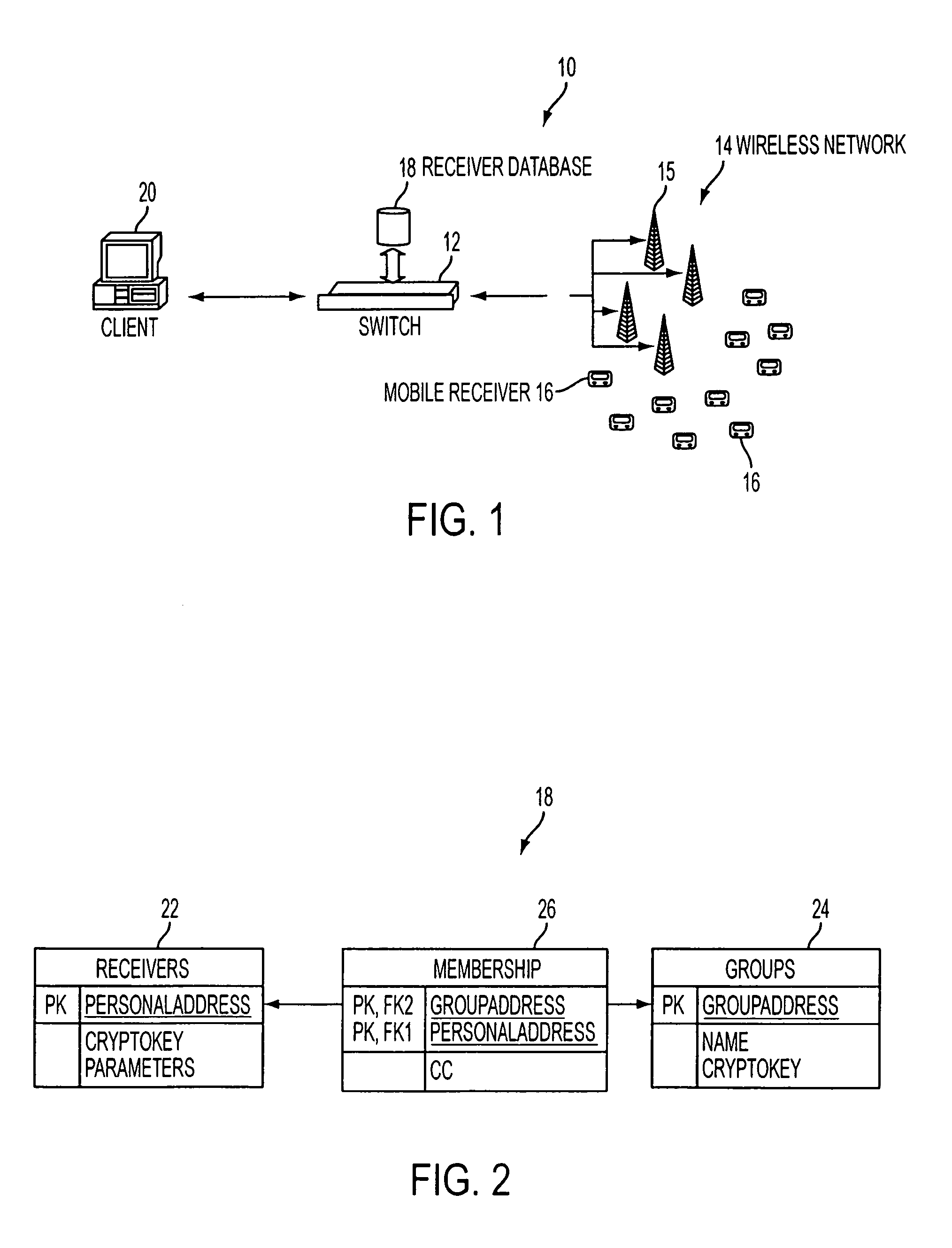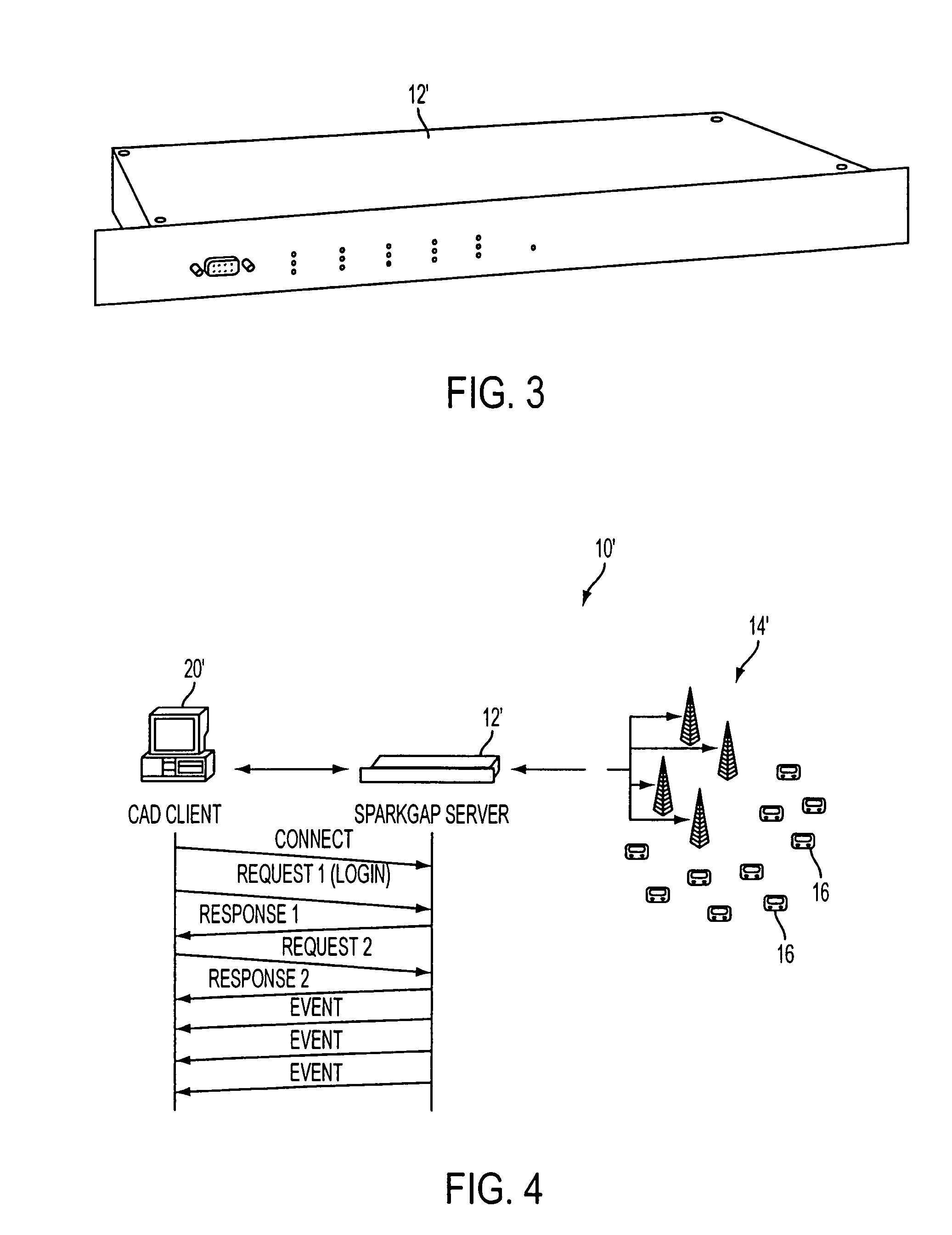Method and apparatus for efficient and deterministic group alerting
a group alerting and deterministic technology, applied in the field of can solve the problems of the inability to effectively monitor the status of first responders, so as to achieve efficient and deterministic group alerting of a group of recipients
- Summary
- Abstract
- Description
- Claims
- Application Information
AI Technical Summary
Benefits of technology
Problems solved by technology
Method used
Image
Examples
Embodiment Construction
[0023]Overview
[0024]In accordance with the present invention, a system and method are provided for reliable, wireless group alerting in a system that comprises a database, switch, wireless network, and a plurality of intelligent mobile receivers, and employs a modified two-way paging protocol based on group messaging capability of the Motorola ReFLEX™ protocol and a novel ALOHA command for multicast acknowledgement (ACK) from mobile receivers. An encrypted message is broadcast to a group address. This message is received by a number of mobile receivers, each of which then acknowledges back to the system, decrypts the message, displays it to the user, and allows the user to respond, if they belong to the group address. The system employs centralized management to simplify the role of the mobile users and administrators, minimizing configuration and operational human errors that would otherwise result in confusion or lost messages. It also employs novel mechanisms to compress the resp...
PUM
 Login to View More
Login to View More Abstract
Description
Claims
Application Information
 Login to View More
Login to View More - R&D
- Intellectual Property
- Life Sciences
- Materials
- Tech Scout
- Unparalleled Data Quality
- Higher Quality Content
- 60% Fewer Hallucinations
Browse by: Latest US Patents, China's latest patents, Technical Efficacy Thesaurus, Application Domain, Technology Topic, Popular Technical Reports.
© 2025 PatSnap. All rights reserved.Legal|Privacy policy|Modern Slavery Act Transparency Statement|Sitemap|About US| Contact US: help@patsnap.com



